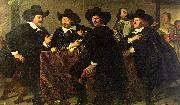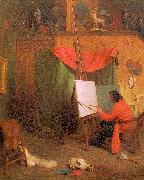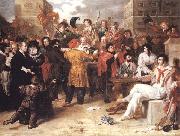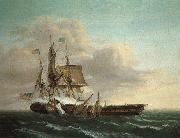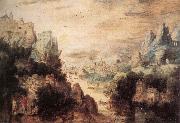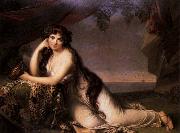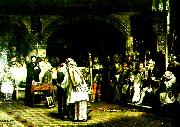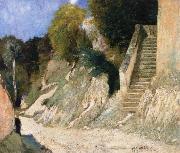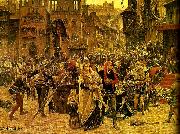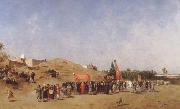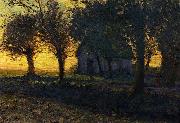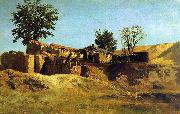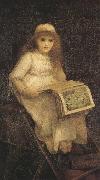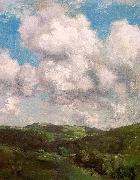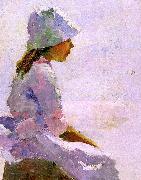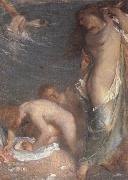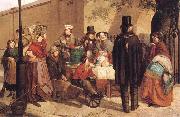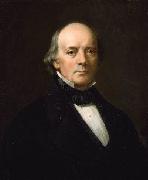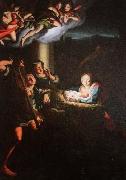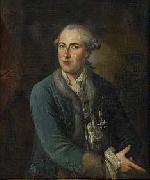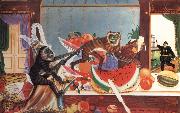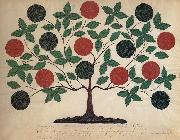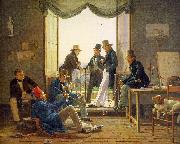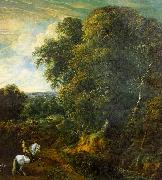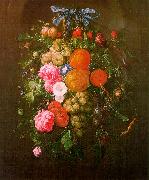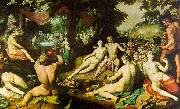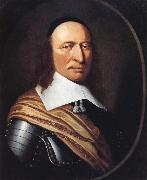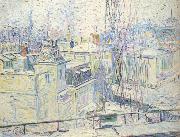|
|
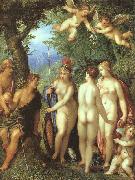 |
Balen, Hendrick von
|
|
Dutch, approx. 1575-1632
Hendrik van Balen
Students included Anthony Van Dyck, Frans Snyders and Gerard Seghers
|
|
|
|
|
|
|
|
|
|
|
|
|
|
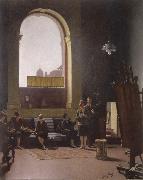 |
Bernard Hall
|
|
Artist, teacher, Director of Melbourne??s National Gallery and Felton Bequest advisor
English-born Australian, 1859-1935 |
|
|
|
|
|
|
|
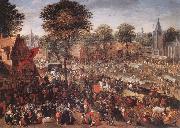 |
BOL, Hans
|
|
Flemish Northern Renaissance Painter, 1534-1593 |
|
 |
BOLLONGIER, Hans
|
|
Dutch painter, Haarlem school (b. ca. 1600, Haarlem, d. ca. 1675, Haarlem) |
|
|
|
|
|
 |
Bundy Horace
|
|
American portraits and landscapes painter, 1814-1883 |
|
|
|
|
|
|
|
|
|
|
|
 |
Carl Heinrich Bloch
|
|
(May 23, 1834 C February 22, 1890) was a Danish painter.
He was born in Copenhagen and studied with Wilhelm Marstrand at the Royal Danish Academy of Art (Det Kongelige Danske Kunstakademi) there.
His early work featured rural scenes from everyday life. From 1859 to 1866, Bloch lived in Italy, and this period was important for the development of his historical style.
His first great success was the exhibition of his "Prometheus Unbound" in Copenhagen in 1865. After the death of Marstrand, he finished the decoration of the ceremonial hall at the University of Copenhagen.
He was then commissioned to produce 23 paintings for the Chapel at Frederiksborg Palace. These were all scenes from the life of Christ which have become very popular as illustrations. The originals, painted between 1865 and 1879, are still at Frederiksborg Palace. |
|
|
|
|
|
|
|
|
|
|
|
|
|
|
|
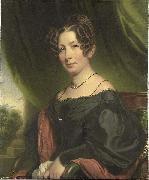 |
Charles Howard Hodges
|
|
(1764, Portsmouth - July 24, Amsterdam), was a British painter active in the Netherlands during the French occupation of 18th and early 19th century.
Charles Howard Hodges had visited Amsterdam in 1788; after a two-year stay in Dublin, he moved with his family to The Hague in 1792. In Amsterdam, he worked as an artist, specialized in the mezzotint technique and pastel. In 1797, he and his family moved to Amsterdam, where he lived with his teacher Johann Friedrich August Tischbein at the Prinsengracht Ne 205. There, he became a famous painter of portraits; he painted over 700 portraits of the rich and famous of that time. He was also an engraver, printer, art dealer and a member of the Amsterdam art club Felix Meritis.
He is well-known for the fact that he painted all the leaders of the Netherlands during the Napoleonic Period, -a turbulent period in Dutch history, since the Netherlands went through 5 different political systems: stadtholder Willem V of the Republic of the United Netherlands, Grand Pensionary Rutger Jan Schimmelpenninck of the Batavian Republic, King Louis Bonaparte (King of Holland), Emperor Napoleon Bonaparte and king William I of the Netherlands. The only known portrait of Sebald Justinus Brugmans was made by him. A design for the honorary cross of the Order of the Union was rejected by Louis Bonaparte.
Hodges advised the Dutch government in 1815 with the return of thousands of works of art, which were confiscated by the French in 1795 from several collections, including the Gallery of Prince William V (the first museum open to the public in the Netherlands), and the several collections of the previous stadtholders. Not all the stolen art was returned from Paris, and it is said that several pieces are still held in the Louvre up to this day.
Most of the over 700 portraits by Hodges are made in the early 19th century, the earlier works in pastel, and later work in oil paint. Several of these portraits can be found in the Rijksmuseum in Amsterdam, in museums and castles and in royal and private collections.
Charles Howard Hodges was father and teacher to James Newman Hodges, een lesser painter who worked in the Rijksmuseum when it was still located in the Trippenhuis in Amsterdam.
|
|
|
|
|
|
 |
Charles Webster Hawthorne
|
|
(January 8, 1872 - November 29, 1930) was an American portrait and genre painter and a noted teacher who founded the Cape Cod School of Art in 1899.
He was born in Lodi, Illinois and his parents returned to Maine, raising him in the state where Charles' father was born. |
|
|
|
|
|
|
|
|
|
|
|
|
|
|
|
|
|
|
|
|
|
|
|
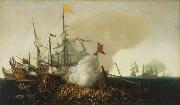 |
Cornelis Hendriksz Vroom
|
|
(1591, Haarlem - buried September 16, 1661, Haarlem) was a Dutch Golden Age landscape painter.
According to the RKD he was the son of the painter Hendrick Cornelisz Vroom, the older brother of Frederick and Jacob, and the father of the painter Jacob Cornelisz Vroom.[1] He became a member of the Haarlem Guild of St. Luke in 1634.
According to Houbraken in 1718, who repeated a list of names from Theodorus Schrevelius's 1648 book on Haarlem called Harlemias, he was the son of Hendrick Cornelisz Vroom and a good landscape painter of Haarlem along with "Joh. Jakobsz.", who was in Italy for many years, "Nicol. Zuyker", Gerrit Claesz Bleker, Salomon van Ruysdael, and Reyer van Blommendael. |
|
 |
Cornelis Holsteyn
|
|
(1618 - 2 December 1658) was a Dutch Golden Age painter from Haarlem.
According to the RKD he was a painter of historical allegories, portraits, and interior decorations, trained by his father Pieter Holsteyn I. According to Houbraken, his father was a glass painter, and thus was trained for glass painting, but the market in glass painting not being what it was, he turned his hand to painting canvas. Houbraken felt he received less for a painting than he deserved, because his work was of a very high quality. He describes a Triumph of Bacchus, and a Lycurgus, which was painted for the Amsterdam Orphanage.
According to the RKD, he moved to Amsterdam with his brother Pieter Holsteyn II in 1647, became poorter there in 1652, and was betrothed there on Christmas eve, 1654. He was buried in the Nieuwe Kerk on December 2, 1658 from his home on the Rozengracht. Houbraken claimed he had been fit until his sudden death by Hartvang, or heart-attack.
|
|
|
|
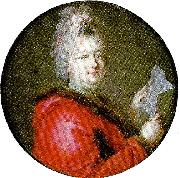 |
cornelius hoyer
|
|
Cornelius Höyer, född 1741, död 1804, var en dansk målare.
Höyer studerade dels i Köpenhamn, dels i Paris och Italien samt var redan 1769, då han återkom hem, en ansedd konstnär inom sitt fack, miniatyrmåleriet. 1770 blev han hovminiatyrmålare och medlem av konstakademien. Från 1777 var han dennas sekreterare.
|
|
|
|
|
|








